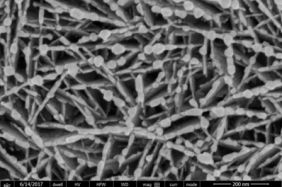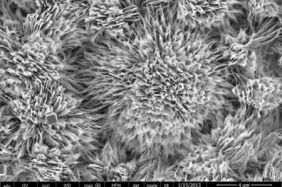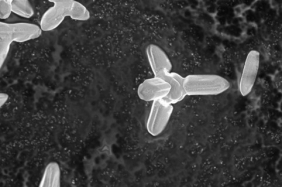Science
- Home
- Science
- Excellence
- Research of the structure and composition of solid materials
-
Excellence
- Advanced materials and technologies
- Surface chemistry and nanotechnology
- Photonic and Laser Technology
- Metrology and measurement technology
- Environmental Research and energetics
- Organic materials and nanoenginering
- Electrochemical energy conversion technologies
- Research of the structure and composition of solid materials
- Long-Term Programs
- Scientific publications
- Conferences
- Projects
Research of the structure and composition of solid materials
The Department of Characterisation of Materials Structure of the Center for Physical and Technological Sciences has accumulated long-term experience and acquired high competences in the field of research on the structure, chemical and phase (mineralogical) composition of solid materials. The department operates a complex of modern equipment necessary for conducting comprehensive and reliable research of this kind. It is a scanning electron microscope, equipped with an energy dispersive X-ray spectrometer (EDX) and a focused gallium ion beam (FIB), with which cross-sections of the investigated layers are opened under the microscope, thin films are produced, which are then examined with the only translucent electron microscope in Lithuania, intended for the research of the solid materials. This microscope also has an EDX spectrometer, therefore it is possible to measure not only the thicknesses of nanometer films (layers), their internal structure, but also their chemical composition.
The crystal structure of solid materials, phase (mineralogical) composition, structure of epitaxial layers, their thicknesses are studied by X-ray diffractometers. This investigation can be performed not only at room temperature, but also at high temperatures (up to 1100 °C) in a vacuum or helium gas atmosphere. The thickness, density and roughness of thin (0.5 – 200 nm) layers are studied by the X-Ray Reflectivity (XRR) method. The phase composition and microstructure of very thin (1 – 10 nm) crystalline layers are studied using the in-plane method. Using polycapillary optics, extremely small amounts of material (1 – 5 mg) and surface areas up to 0.2 mm in diameter are examined, which are selected using a video camera.
Investigations of the chemical composition and chemical state of thin (3 – 40 nm) surface layers are carried out by X-ray photoelectron and Auger electron spectroscopy methods. Both spectrometers are equipped with Ar ion cannons, which allows the studies of chemical composition and state of the sample through the depth. A special Auger electron nanoprobe spectrometer is intended for Auger electron spectroscopy studies, which also works in the mode of a scanning electron microscope and performs chemical composition studies with an EDX spectrometer.
The competence of these methods is gathered:
- Department of Characterisation of Materials Structure (Head dr. R. Kondrotas)


